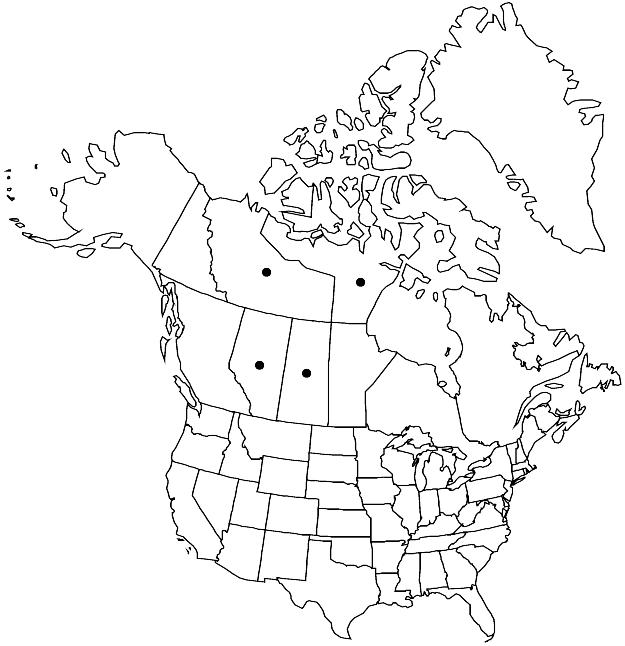Salix tyrrellii
J. Arnold Arbor. 17: 231, plate 192. 1936.
Shrubs, 0.6–3.5 m, (sometimes forming clones by layering). Stems: branches and branchlets redbrown, not to strongly glaucous, glabrous, (buds caprea-type or intermediate). Leaves: stipules rudimentary or foliaceous (often brownish) on early ones, foliaceous or rudimentary on late ones, (ca. 4 mm), apex acute; petiole convex to flat, or shallowly grooved adaxially, 1–3.4–16 mm, glabrous, pilose, or short-silky adaxially; largest medial blade (amphistomatous), narrowly elliptic, elliptic, oblanceolate, or obovate, 15–29–65 × 3.5–8.8–18 mm, 2.3–3.3–4.4 times as long as wide, base cuneate or convex, margins strongly to slightly revolute, entire, or very shallowly serrulate or shallowly serrulate-crenulate, apex acute, acuminate, or convex, abaxial surface glaucous, sparsely long-silky to glabrescent, hairs (ferruginous), straight, adaxial highly glossy, glabrous or sparsely short-silky (hairs white, sometimes also ferruginous); proximal blade margins entire; juvenile blade yellowish green or sometimes reddish, sparsely long-silky abaxially, hairs white and ferruginous. Catkins flowering before leaves emerge; staminate stout, 14–35 × 12–16 mm, flowering branchlet 0 mm; pistillate densely flowered, stout, 17–51 × 10–13–22 mm, flowering branchlet 0–4 mm; floral bract brown, black, or bicolor, 1–3.7 mm, apex acute to acuminate or rounded, abaxially hairy, hairs long, straight. Staminate flowers: adaxial nectary oblong, 0.8–1.1 mm; filaments distinct, glabrous or hairy basally; anthers purple turning yellow, ellipsoid, 0.4–0.7 mm. Pistillate flowers: adaxial nectary oblong or flask-shaped, 0.6–1.1 mm, equal to or shorter than stipe; stipe 0.2–1 mm (–1.4 mm in cultivation); ovary pyriform, long-silky, beak gradually tapering to styles; ovules 12–16 per ovary; styles 0.6–1.2 mm; stigmas flat, abaxially non-papillate with rounded tip, or slenderly cylindrical, 0.44–0.55–0.75 mm. Capsules 3.6–5 mm.
Phenology: Flowering mid Jun-mid Jul.
Habitat: Active sand dunes, shrubby tundra
Elevation: 200-600 m
Distribution

Alta., N.W.T., Nunavut, Sask.
Discussion
Salix tyrrellii, first described from Lake Athabasca sand dunes in northwestern Saskatchewan and adjacent Alberta, is characterized by slender, amphistomatous leaves and relatively long, slender branchlets (G. W. Argus and J. W. Steele 1979). It probably evolved, in the past 10,000 years, from the widespread boreal S. planifolia. Originally, it was thought to be endemic to Lake Athabasca but recent collections from Nunavut and the Northwest Territories suggest that it may have a much wider range. Plants from Nunavut and the Northwest Territories do not have the long, slender branchlets found in sand dune populations, and identification is primarily based on the presence of amphistomatous leaves. This character, however, may be unreliable. For example, S. planifolia from 2610 m in the Glass Mountains, California, have amphistomatous leaves, suggesting that this character may be under environmental influence. The appropriate rank for this taxon remains uncertain.
Selected References
None.
Lower Taxa
"-65mm" is not declared as a valid unit of measurement for this property."-18mm" is not declared as a valid unit of measurement for this property."-16mm" is not declared as a valid unit of measurement for this property."-0.75mm" is not declared as a valid unit of measurement for this property.